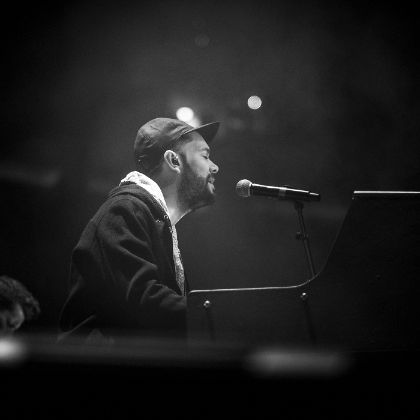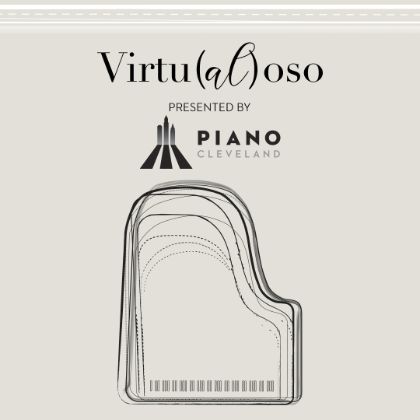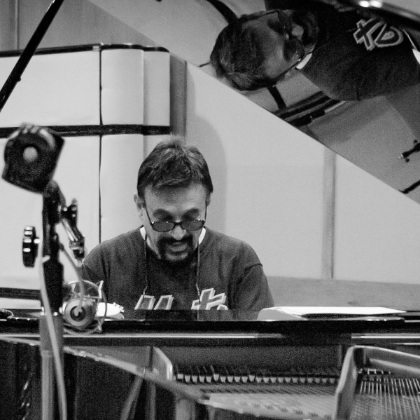Listen Magazine Feature
Fred Hersch wasn’t ready to quit
By Clifford S. Tinder
In honor of Thelonious Monk’s centenary, Listen: Life with Music & Culture has republished its 2010 feature with pianist and steinway artist Fred Hirsch.
Fred Hersch settles onto the piano bench and takes a deep breath of the moist August air. He turns to address the audience and raises his hand to acknowledge the barking dog in the distance. The audience, seated in church pews in the ninety- five-year-old wooden-shell Maverick Concerts venue, nestled deep in the Woodstock woods, laughs in appreciation of the canine presence. With a few words, Hersch introduces Jobim’s Desafinado, bows his head over the keyboard, closes his eyes and launches into the song’s driving Brazilian rhythms, lilting melody and rich harmonic structure.
Almost immediately, Hersch begins to take control of the tune, adding his own chord substitutions, running intricate counterpoints between his hands and employing the full range of the instrument in ways not usually associated with jazz piano. His technique is breathtaking. Sensitive dynamics elicit gasps from the audience. Sinuous melodies flow and swirl as thematic material bubbles up from a deep source. Tempos and rhythms come in undulating waves. The complexity and density of his creation builds to points of overwhelming tension, only to be released with passages of pristine lyricism.
This is pure improvisation at the highest level, transformed into composition of the moment. Hersch draws freely on classical and world folk themes and techniques, seamlessly incorporating them into his jazz sensibility. The audience is undeniably drawn in to the warmth, wit, depth of feeling and amazingly broad palette of musical expression that is Fred Hersch: they know they are watching a true jazz master and one of the greatest living pianists at the height of his career, in the best possible setting — a solo piano recital.
Hersch turns to acknowledge applause. “Before I play Monk’s ‘Evidence,’ let me tell you about a dream I had about Monk. I find myself in a room, inside a cage that is five feet by five feet, just small enough that I can’t fully stand up or lay down. I look over and in a slightly larger cage is Thelonious Monk. We are both suddenly handed manuscript paper and told that whichever one of us writes a composition first will be released. I start frantically scribbling. Then I look over my shoulder and I see Monk just standing there with an ironic smile on his face.
“This is one dream that I am dealing with in a new project that is almost completed, called My Coma Dreams.”
In 2008 Hersch fell into a two-month HIV-related coma in which he lay unconscious, bound to a hospital bed in New York’s St. Vincent’s Hospital. While those closest to him (his parents, brother and partner Scott Morgan) assumed a recovery would be impossible, Hersch awoke.
“When I got out of my coma, I couldn’t walk, I couldn’t sit up, I didn’t eat or drink for eight months,” Hersch says a few days after the concert, in the living room of his Soho loft.
“I was on a stomach feeding tube. I couldn’t speak because I had a paralyzed vocal cord from being intubated. I weighed a hundred and five pounds. I couldn’t lift my arms higher than this” — he demonstrates just the slightest elevation. “It was a lot of physical therapy and swallow therapy. But I was very determined, and I’m back at one hundred percent. My HIV numbers are better than they have been in years because of the new medications. I think that I am overall healthier, I have more energy. I’m not finished — I have more things that I want to do. I was just not going to let this define me. My Coma Dreams is a way of taking what I came away from that experience with — these dreams — and doing something with them, expressing them somehow in a creative way.”
Sitting in a chair a few feet away from his steinway grand, Hersch leans forward just slightly and continues: “I came home in September and started playing gigs in early December and played the Vanguard in January. I still had a tube hanging out of my stomach. I just said, ‘I’m not going to quit.’
“Now, I’m very appreciative of where I am. I don’t get out of bed and say ‘Praise the Lord’ — I want my coffee and I get crabby like everyone else — but I am also aware that I have been as close to death as you can come. I’m obviously not a kid, and not quite an old master yet — if I hang in there, I might just be one some day. Every year, my career gets more interesting.”
Monk is arguably the most significant jazz composer of tunes. It all fits onto seventy-two pages, whereas Duke Ellington’s works would fill this room.
With the earlier success of his large-scale composition Leaves of Grass, an engaging setting of Walt Whitman’s venerable poem composed for two voices (Kurt Elling and Kate McGarry) and jazz octet (performed at Carnegie Hall in 2005), Hersch is ready for an even more challenging work.
“When I came out of my coma, I retained these eight or nine dreams, very specific details like colors, shapes and smells. I never usually remember my dreams, so the fact that I remembered them so vividly for so many weeks afterwards said to me that I needed to do something with them.
“I’ve been working with a wonderful librettist, Herschel Garfein, who is also a composer and director. The stories of these dreams will be told in different ways. One of them will be sung, some will be projected as animated text, some will be acted, or combinations of the above. e musical material is complete, the performance set.” [May 7 and 8, 2011, Kasser Theater, Montclair, NJ; October 30, 2011, Herbst Theater, San Francisco.]
Hersch’s broad musical experience has allowed him to explore many di erent musical genres and settings. He has worked with some of the great singers of our time — Renée Fleming, Norma Winstone, Leny Andrade and Dawn Upshaw — and paid his jazz dues as a sideman with such greats as Stan Getz, Art Farmer and Joe Henderson. “I spent ten years playing with Joe Henderson. Joe was a very resourceful improviser, he could play a fifteen-minute solo and keep you on the edge of your seat. Few people can do that.” Hersch’s large-scale works and his Pocket Orchestra (an unorthodox grouping of piano, voice, trumpet and percussion presented on Fred Hersch Pocket Orchestra: Live at Jazz Standard [Sunny Side]) feature his often Monk-inspired compositional approach.
“Monk is arguably the most significant jazz composer of tunes,” Hersch says. “It all fits onto seventy-two pages, whereas Duke Ellington’s works would fill this room.”
Hersch’s trio work is always thrilling, as evidenced by Whirl (Palmetto), his first recording since the coma. But it is Hersch’s solo piano that allows full insight. “In a solo setting, I’m responsible for everything. Solo is something that I am very comfortable with: it allows me to play a wide range of repertoire and to use the whole piano and range of dynamics and play off the acoustics of the room and the vibe of the audience. When I’m playing solo, I can be much more orchestral.
I have been as close to death as you can come.... I’m obviously not a kid, and not quite an old master yet — if I hang in there, I might just be some day.
“I can also avoid the tyranny of the bar line. I can easily go over the bar and stay out there for a while — you are just absolutely free.” Hersch’s approach to Monk’s “Evidence” on his seminal solo recording, In Amsterdam: Live At The Bimhuis (Palmetto), is the pianist at his most devious. He spends almost the entire piece in a fascinating, witty introduction that only hints at the chord structure and melody without ever stating the theme. Instead, he creates angular, melodic, Monk-like lines and counterpoint, full of tritones and minor seconds, supported with Monk–influenced comping and rhythmic underpinnings. Having thoroughly teased the audience, Hersch finally states the tune — and ends.
“If you want to know what a great jazz musician is, Sonny Rollins would be the person I would go to. He’s got everything
in his playing — intellect, humor, humanity, swing, technique, sound and incredible rhythm. He’s the perfect jazz player.” Sounds familiar: Hersch also possesses these attributes, and like Rollins, his influence continues to expand with a new generation of players.
Along with two of his students, Brad Mehldau and Ethan Iverson, both of whom have made forays into the classical genre, Hersch is creating a new brand of jazz that strays over stylistic borders in a very natural and emotionally expressive fashion. “Each song should make you play a different way. The trick is to keep finding things that continue to inspire you, always moving forward.”
This article originally appeared in Listen: Life with Music & Culture, Steinway & Sons’ award-winning magazine.
-

Ben Lovett - The Outsider's Insider
Mumford & Sons’ Ben Lovett on New York City as creative
inspiration, working within and without the industry, his musical journey, and songwriting.by Ben Finane
Read More -

Virtu(al)oso Connects Artists and Audiences for Unprecedented Relief Effort
Steinway Partners with Piano Cleveland for Virtual Competition
Read More -

Steinway Artist - Mike Longo
Mike Longo (1937–2020) was the consummate jazz man — a pianist, composer, and educator whose career spanned almost seven decades.
Read More